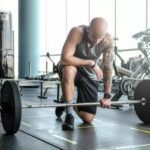How should workout pants fit? The proper fit of workout pants is crucial for optimal performance and comfort during exercise. Ill-fitting pants can have negative effects on mobility, muscle support, and confidence in the gym or studio.
In this article, we will explore the significance of wearing properly fitted workout pants, discuss the importance of measuring and sizing charts, delve into the right fit for different activities, examine waistband options, consider length and material choices, address common fit concerns, and touch on additional factors to consider when choosing workout pants. By understanding how workout pants should ideally fit, you can enhance your workout experience and elevate your performance to new heights.
Choosing the Right Size
When it comes to finding the perfect fit for workout pants, understanding measurements and consulting sizing charts is crucial. Taking accurate measurements of your waist, hips, and inseam can help you determine the ideal size for your body. It’s important to remember that sizing standards may vary between different brands, so trial and error may be necessary to find the right fit.
To measure your waist, use a measuring tape around the narrowest part of your torso, just above your belly button. For hips, measure around the fullest part of your hips. The inseam measurement is taken from the crotch seam down to where you want the pants to fall on your leg. These measurements will provide guidance when comparing them with sizing charts provided by brands.
When looking at sizing charts, pay attention to specific instructions given by each brand on how to measure and which size corresponds with each measurement range. Some brands may even provide a body type guide to help you select not only the right size but also the right style for your body shape.
It’s worth noting that finding the correct size might take some trial and error, as every brand has its own interpretation of sizing standards. If you are unsure about which size to choose initially, consider ordering two sizes or checking if there is a free return policy in place so that you can easily make exchanges if needed.
Overall, taking accurate measurements and utilizing sizing guides will help you make more informed decisions when choosing workout pants that fit just right for optimal performance and comfort during your workouts.
The Right Fit for Different Activities
When it comes to workout pants, one size does not fit all. Different types of activities require different fits to optimize performance and comfort. Whether you’re practicing yoga, going for a run, or lifting weights, choosing the right fit for your activity is crucial. In this section, we will explore the specific fit requirements for various types of workouts and provide examples of workout pants styles that excel in each activity.
- Yoga: In yoga, flexibility and freedom of movement are essential. Tight-fitting pants with a four-way stretch are ideal for allowing unrestricted movement and maintaining proper alignment during poses. Look for high-rise waistbands that provide support and coverage during bending and stretching movements.
- Running: For running, pants that offer moisture-wicking properties are essential to keep you dry and comfortable. Opt for lightweight and breathable materials like polyester or nylon blends that allow air circulation while providing adequate coverage. Consider pants with reflective details if you plan on running in low-light conditions.
- Weightlifting: When it comes to weightlifting, having a good range of motion is crucial while still maintaining muscle support. Choose workout pants with a snug fit around the hips and thighs but slightly looser around the knees for flexibility during squats or lunges. Look for fabrics with some degree of compression to help improve blood flow and reduce muscle fatigue.
- Other activities: Different activities may have unique fit requirements as well. For example, cycling may require padded shorts or leggings with reinforced seams to prevent chafing. High-intensity interval training (HIIT) workouts may benefit from moisture-wicking fabrics that keep you cool during intense sweat sessions.
Remember, these recommendations are just a starting point, and personal preferences can vary from person to person. It’s essential to try different styles and fits until you find what works best for your specific activity and body type.
– Yoga:
- Tight-fitting pants with four-way stretch.
- High-rise waistbands for support and coverage.
– Running:
- Moisture-wicking materials like polyester or nylon blends.
- Lightweight and breathable fabrics for comfort.
- Reflective details for visibility in low-light conditions.
– Weightlifting:
- Snug fit around hips and thighs, slightly looser around knees.
- Fabrics with some compression for muscle support and reduced fatigue.
– Other activities:
- Cycling: Padded shorts or leggings with reinforced seams to prevent chafing
- HIIT workouts: Moisture-wicking fabrics to keep you cool during intense sessions Finding the right fit for your chosen activity can greatly enhance your performance, confidence, and overall workout experience. Experiment with different styles, fabrics, and fits to discover what feels best for you. Remember that comfort should always be a priority, as wearing ill-fitting pants can hinder your ability to move freely and impact your motivation.
Waistband
The waistband is an essential element when it comes to finding the perfect fit for workout pants. It plays a significant role in providing the right balance between support and comfort during workouts. A well-fitting waistband not only keeps the pants securely in place but also ensures that you feel confident and comfortable throughout your exercise routine.
There are different styles of waistbands available, each with its own unique benefits. One popular option is the high-rise waistband, which sits above the hips and provides excellent support and coverage. High-rise waistbands are particularly suitable for activities like yoga or weightlifting, where you may need extra stability around your core.
Mid-rise waistbands, on the other hand, sit at or slightly below the natural waistline. They offer a more relaxed fit and can be a great choice if you prefer a lower profile waistband that still provides some support. Mid-rise waistbands are often seen in running or cardio-focused workout pants.
Wide waistbands are another feature to consider. These have gained popularity due to their ability to distribute pressure evenly across the midsection and provide greater support. Whether you choose a high-rise or mid-rise option, a wide waistband can help prevent unwanted rolling or digging in during intense movements.
When selecting the most suitable waistband style, it’s important to consider your body type and personal preference. Some individuals may feel more comfortable with a snug-fitting waistband that offers maximum support, while others may prefer a looser fit for increased freedom of movement. Ultimately, finding the perfect balance between support and comfort will depend on your preferences and activity level.
Length
When it comes to workout pants, the length plays a crucial role in providing optimal coverage and mobility during various activities. Whether you’re engaging in yoga, running, weightlifting, or any other physical activity, choosing the right length can significantly enhance your performance and overall comfort. In this section, we will discuss the importance of considering leg length when selecting workout pants and provide suggestions on how to choose the appropriate length based on body height and desired coverage.
Leg length is a key factor to consider when choosing workout pants because it directly affects both coverage and mobility. For individuals with shorter legs, longer pants may cause excess fabric to bunch up around the ankles or hinder movement by creating drag. On the other hand, those with longer legs may find that shorter pants leave their lower legs exposed or restrict their range of motion. It is essential to strike a balance between adequate coverage and unrestricted movement.
To determine the appropriate length for your workout pants, start by considering your body height. If you are on the taller side, opt for full-length leggings or pants that reach down to your ankles to ensure proper coverage.
This will not only protect your legs from potential abrasions but also help keep your muscles warm during colder workouts. For individuals with shorter legs, crop leggings or capri-length pants are a great option as they fall above the ankle without overwhelming your frame.
Another important consideration when it comes to length is the type of activity you will be participating in. For activities that require a lot of bending and stretching like yoga or Pilates, it is often beneficial to choose slightly shorter leggings or pants to prevent them from sliding up during movements.
On the other hand, if you primarily engage in activities like running or cycling where full leg coverage is important for protection against external elements such as wind or sun exposure, opt for full-length options.
Material and Stretch
When it comes to workout pants, the material and stretch are crucial factors that determine their flexibility and durability. The right blend of fabric can make a significant difference in your overall comfort and performance during workouts.
One popular material used in workout pants is nylon. Nylon fabric offers excellent flexibility, allowing for a wide range of motion without any restrictions. It is also known for its moisture-wicking properties, keeping you dry and comfortable during intense sweat sessions. Additionally, nylon is highly durable, meaning that your workout pants will last through numerous washes and rigorous exercises.
Polyester is another commonly used fabric in workout pants. Similar to nylon, polyester is known for its moisture-wicking abilities, helping to evaporate sweat quickly and keep you cool. It also offers good breathability, preventing the build-up of odor-causing bacteria. Polyester fabrics are often blended with other materials such as spandex or elastane to provide optimal stretchiness.
Speaking of spandex or elastane, these synthetic fibers are essential in providing excellent stretch and recovery in workout pants. With their high elasticity, spandex allows for unrestricted movement during exercises like squats or yoga poses. These flexible fibers help maintain the shape of the pants even after repeated stretching or movements.
| Material | Flexibility | Moisture-Wicking | Durability |
|---|---|---|---|
| Nylon | Excellent | Yes | High |
| Polyester | Good | Yes | Moderate-High |
| Spandex/Elastane | Excellent | Varies (depending on blend) | Moderate |
When choosing workout pants, take into consideration the activities you will be performing. For high-intensity workouts or activities that require a lot of stretching and bending, opt for pants with a higher spandex content to ensure maximum flexibility. However, keep in mind that fabrics with higher spandex content may sacrifice some durability compared to pants made with nylon or polyester blends.
Fit Concerns
Waist Gaps and Sagging
One common fit concern when it comes to workout pants is waist gaps and sagging. These issues can be problematic as they not only affect the overall fit but also impact comfort and confidence during workouts. To address waist gaps, look for workout pants with adjustable waistbands or drawstrings that allow you to tighten the waist for a more secure fit.
High-rise or mid-rise waistbands can also help prevent waist gaps by providing additional coverage and support. Additionally, make sure to choose pants made from fabrics with good stretch and recovery properties to ensure that they stay in place during movement.
If you are experiencing sagging in your workout pants, consider opting for a smaller size or trying a different brand that offers better shape retention. Ensure that the pants have a snug fit around your hips and thighs without being too tight. Choosing pants with thicker or more compressive materials can also help prevent sagging by providing adequate support.
Camel Toe
Another common fit concern that many individuals face is camel toe, which can be uncomfortable and embarrassing. Camel toe occurs when there is excess fabric or inadequate coverage in the crotch area of workout pants, resulting in visible gathering or bunching. To avoid camel toe, opt for workout pants specifically designed with a gusseted crotch, which provides additional fabric in this area to minimize any discomfort.
You can also try selecting workout pants made from fabrics with good recovery properties, as these tend to stretch evenly without causing bulges or creases. It’s essential to find a balance between a snug fit and adequate stretch to prevent camel toe. Lastly, if you still experience this issue even after trying different styles or sizes of workout pants, consider wearing seamless underwear or layering your leggings with shorts for added coverage.
Sheerness
A significant concern when it comes to workout pants is sheerness. Nobody wants their pants to turn see-through during intense workouts or yoga poses. To address this issue, look for workout pants specifically labeled as “squat-proof” or “opaque,” indicating that they provide sufficient coverage even during movements and stretches. Opting for pants made from thicker materials or with multiple layers can also help prevent sheerness.
When trying on workout pants, make sure to do a bend-over test in a well-lit area to check for transparency issues. If you notice any slight sheerness, consider going up a size or trying a different brand that offers better opacity. Additionally, wearing underwear that matches the color of your workout pants can help minimize the appearance of sheerness.
By addressing common fit concerns such as waist gaps, sagging, camel toe, and sheerness, you can ensure that your workout pants fit properly and provide optimal comfort and support during your exercise routine. Taking the time to find the right fit will enhance your overall experience and boost your confidence, allowing you to focus solely on achieving your fitness goals without any distractions.
Beyond the Fit
When choosing workout pants, there are several factors to consider beyond just the fit. While finding a pair that fits well is crucial for optimal performance and comfort, taking into account additional considerations can further enhance your workout experience.
One factor to consider is the color and design of the workout pants. While this may seem like a purely aesthetic consideration, studies have shown that wearing bright or vibrant colors during exercise can increase motivation and mood.
Additionally, choosing a design that you find appealing can boost your confidence and make you feel more excited about putting on your workout gear. Whether you prefer solid colors or bold patterns, selecting workout pants that align with your personal style can make your workouts more enjoyable.
Another consideration is the presence of pockets in workout pants. Pockets can be incredibly convenient for storing small items like keys, cards, or even smartphones during workouts. This eliminates the need for carrying an extra bag or having to hold these items in your hands while exercising. Look for workout pants with secure pockets that are deep enough to hold your essentials without hindering your movement.
Lastly, it’s important to consider the fabric technology used in workout pants. Moisture-wicking materials like nylon and polyester are excellent choices as they help draw sweat away from the body and keep you dry during intense workouts. Stretchy fabrics with a high percentage of spandex or elastane provide flexibility and freedom of movement, essential for activities like yoga or weightlifting.
| Consideration | Benefit |
|---|---|
| Color and Design | Increase motivation and mood, boost confidence |
| Pockets | Convenience for storing essentials during workouts |
| Fabric Technology | Moisture-wicking properties, flexibility, and freedom of movement |
Conclusion
In conclusion, finding the perfect fit for your workout pants is essential for optimizing your performance and comfort during exercise. Ill-fitting pants can negatively impact mobility, muscle support, and confidence, hindering your overall workout experience. Therefore, it is crucial to take accurate measurements, consult size charts, and try on different sizes and styles before making a purchase.
When choosing the right size for your workout pants, understanding measurements and sizing charts is vital. Taking accurate measurements of your waist, hips, and inseam will help you determine the ideal size. It’s important to remember that sizing standards may vary between different brands, so some trial and error may be necessary to find the perfect fit.
Different types of workouts require specific fit requirements. For activities like yoga, running, weightlifting, and more, selecting the appropriate style and fit of workout pants can enhance your performance. High-rise or mid-rise waistbands provide adequate support without sacrificing comfort, while different leg lengths offer optimal coverage and mobility based on your individual height.
Consideration should also be given to the material and stretch of workout pants. The fabric blend plays a significant role in flexibility, moisture-wicking capabilities, and durability. Nylon, polyester, spandex blends are commonly used due to their ability to provide both flexibility and durability. The choice of material should align with personal preferences as well as the type of workouts you engage in.
While ensuring a proper fit is paramount in choosing workout pants that meet your needs physically, don’t forget about considering additional factors such as color, design, pockets that influence motivation and confidence during workouts. Ultimately embrace finding the perfect fit that suits your body type while aligning with personal preferences.
Frequently Asked Questions
How do I know if my workout pants are too small?
It’s important to pay attention to certain indicators to determine if your workout pants are too small. Firstly, check if there is excessive stretching or sheerness, as this may suggest the fabric is under strain and could even tear during exercise.
If you notice any discomfort or restriction of movement, such as feeling constricted at the waistband or limited range of motion in your legs, it could be a sign that your pants are too small. Furthermore, if you find yourself constantly readjusting your pants during workouts due to them riding up, falling down, or rolling at the waistband, it may be an indication that they are too tight.
How tight should activewear be?
When considering how tight activewear should be, the key is finding a balance between comfort and functionality. Activewear should typically fit snugly against your body without feeling excessively restrictive. A good rule of thumb is that your clothing should provide enough support and compression to keep everything in place during workouts without causing discomfort or impeding movement.
The fabric should not excessively dig into your skin or leave imprints after removal. Remember that different activities may require different levels of tightness; for instance, running tights might need more compression compared to yoga leggings.
Should you size up or down in activewear?
Whether you should size up or down in activewear depends on several factors including personal preference and the specific brand’s sizing guidelines. However, in general, it is often recommended to follow the brand’s sizing chart and choose the size suggested based on your measurements as a starting point when purchasing activewear.
If you find yourself unsure between two sizes, consider trying both on and assessing how each one feels on your body while performing movements relevant to the activity you’ll engage in most frequently. Keep in mind that poorly fitting activewear can hinder performance whereas properly sized garments offer optimal comfort and support for your workouts and activities.

Passionate about providing useful information to anyone with an interest in the field of Personal Training, I strive to pass on to our readers quality information and to answer any questions about Personal Trainers, the work they do and how to become one.





